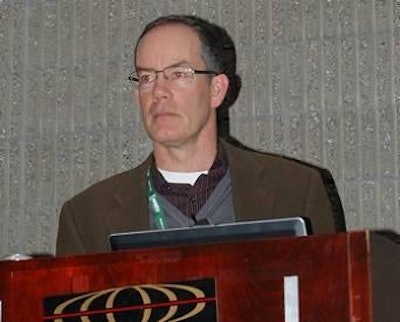
Robert O’Connor, senior vice president, technical services, Foster Farms, said that Foster Farms’ broiler processing plants in California now have Salmonella incidence rates on its chicken parts that are consistently below 5 percent.
Dr. Robert O’Connor, senior vice president, technical services, Foster Farms, said, “I am not going to give you a recipe for reducing Salmonella prevalence on chicken parts. I am not going to advocate any products. I am going to give you the process we went thorough to lower the incidence of Salmonella on poultry parts. It isn’t about what product you use, but the process you use to evaluate the products.”
He told the audience at USPOULTRY’s seminar, “Microbial Control in Second Processing,” that while Foster Farms has succeeded in meeting the goal set for it by USDA’s Food Safety and Inspection Service (FSIS) of reducing Salmonella incidence on its broiler parts from its pre-outbreak level of 25 percent to 5 percent of less, its journey continues.
“We reached our goal, but now we have to maintain it,” O’Connor said.
O’Connor said that when his company was first contacted by USDA and the Centers for Disease Control and Prevention (CDC) about the outbreak and the suspected link to Foster Farms’ broiler products, Foster Farms’ personnel spent both time and energy pushing back against the agencies. He said, “That didn’t work; I wouldn’t recommend that approach.” He suggested that any processor in that situation should engage the people from those agencies. He said that, eventually, Foster Farms met with CDC personnel at the agency headquarters in Atlanta, not just on teleconferences. He said that forming these relationships helped him and the rest of Foster Farms’ team to understand all of the data the agencies had and let them see that everyone was trying to solve a public health problem.
O’Connor shared data on Salmonella results for carcasses and parts for the firm’s three California broiler processing plants. The company was notified of the outbreak in October of 2013. He said that within six months, in April of 2014, all three plants had Salmonella incidence rates on parts below the goal given to them by USDA of less than 5 percent. The company has managed to keep its Salmonella incidence on parts down around 2 percent through the remainder of 2014, according to data O’Connor reported.


















